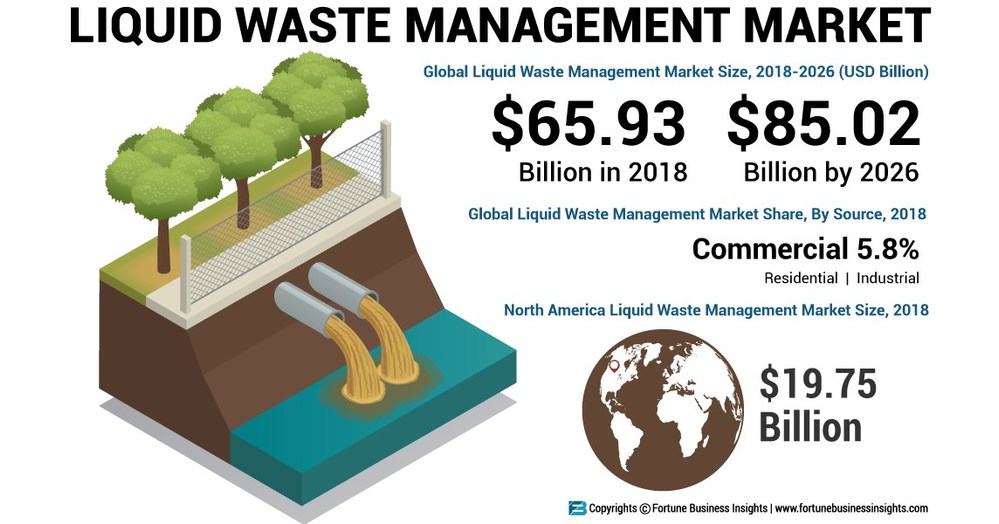8 Easy Facts About Reclaim Waste Explained
8 Easy Facts About Reclaim Waste Explained
Blog Article
See This Report on Reclaim Waste
Table of ContentsThe Best Guide To Reclaim WasteIndicators on Reclaim Waste You Need To KnowNot known Facts About Reclaim WasteThe Best Guide To Reclaim WasteThe Best Strategy To Use For Reclaim Waste
Check out the types, events, and kinds of liquid waste. Domestic sewage waste refers to the waste and items from a household septic system. This kind of waste is created by humans in houses, colleges, and other structures. This only includes septic containers that have a drainpipe field. The proper management and disposal of residential sewer waste call for liquid waste to be moved to a sewage treatment plant where the appropriate approaches and tools are applied to detoxify and throw away waste.
Industrial waste usually includes prospective hazards, such as combustible materials or a mix of fluid and solid waste products, and calls for an advanced and detailed disposal procedure. The disposal of commercial waste normally includes the filtering of waste prior to transport to make certain secure and appropriate disposal. Hazardous waste is created from results and overflow of industrial processes and manufacturing.
This sort of waste can not make use of the exact same sewage management transport or processes as septic or commercial fluids. The commercial waste monitoring process requires the evaluation and testing of liquid waste prior to it undergoes the disposal procedure (liquid waste removal). Drainage waste is the liquid waste that comes from overflow and excess stormwater in very booming locations or cities
Runoff waste can create contamination and flooding if not handled correctly. Making certain proper waste monitoring can stop calamities and reduce environmental injury.
The 7-Minute Rule for Reclaim Waste
Get in touch with PROS Services today to find out about our waste management and disposal solutions and the appropriate methods to take care of the liquid waste you generate.
(https://ameblo.jp/reclaimwaste1/entry-12874802223.html)Do you recognize what takes place to your water when you disengage, flush the toilet or drain the cleaning maker? No? Well, it's worth understanding. This so-called 'wastewater' is not only an essential source but, after treatment, will be launched to our land, rivers or the ocean. Made use of water from commodes, showers, bathrooms, kitchen sinks, laundries and commercial processes is referred to as wastewater.

water utilized to cool machinery or tidy plant and equipment). Stormwater, a type of wastewater, is overflow that moves from agricultural and metropolitan areas such as roofs, parks, yards, roads, courses and gutters into stormwater drains pipes, after rainfall. Stormwater streams untreated straight to local creeks or rivers, ultimately getting to the sea.
The Greatest Guide To Reclaim Waste
In Queensland, a lot of wastewater is dealt with at sewer therapy plants. Wastewater is carried from domestic or industrial sites via a system of drains and pump terminals, known as sewerage reticulation, to a sewer treatment plant.
The Division of Natural Resources suggests city governments about managing, operating and preserving sewage systems and treatment plants. In unsewered areas, city governments may need householders to set up individual or family sewage therapy systems to treat residential wastewater from toilets, cooking areas, washrooms and laundries. The Division of Natural Resources authorises the usage of family systems when they are verified to be effective.
In some brand-new class, therapy of some stormwater to get rid of litter, sand and crushed rock has actually started utilizing gross toxin traps. Wastewater treatment occurs in 4 stages: Removes solid matter.
Utilizes little living microorganisms understands as micro-organisms to official statement damage down and remove continuing to be liquified wastes and great particles. Micro-organisms and wastes are included in the sludge.
6 Simple Techniques For Reclaim Waste
Nutrient removal is not offered at all sewer treatment plants because it calls for pricey specialised equipment. It is coming to be a lot more common in Queensland. Clear fluid effluent produced after therapy may still consist of disease-causing micro-organisms. If this effluent is launched right into rivers such as rivers or the sea, the micro-organisms will at some point pass away out.

The majority of wastewater streams right into the sewage system. Under the Act, local federal governments administer approvals and licences for eco pertinent tasks (Ages) involving wastewater releases that might have a neighborhood effect.
The Single Strategy To Use For Reclaim Waste
Monitoring offers factual details concerning water quality and can validate that licence problems are being satisfied. The information obtained with tracking supplies the basis for making water top quality choices.
Report this page